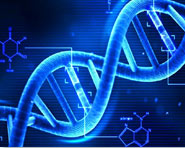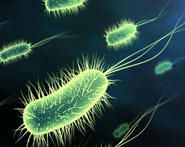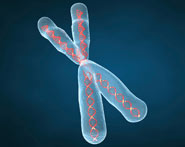


 النبات
النبات
 الحيوان
الحيوان
 الأحياء المجهرية
الأحياء المجهرية
 علم الأمراض
علم الأمراض
 التقانة الإحيائية
التقانة الإحيائية
 التقنية الحيوية المكروبية
التقنية الحيوية المكروبية
 التقنية الحياتية النانوية
التقنية الحياتية النانوية
 علم الأجنة
علم الأجنة
 الأحياء الجزيئي
الأحياء الجزيئي
 علم وظائف الأعضاء
علم وظائف الأعضاء
 الغدد
الغدد
 المضادات الحيوية
المضادات الحيوية|
Read More
Date: 20-12-2021
Date: 16-10-2021
Date: 19-9-2021
|
Structure and Function of Glycogen
The main stores of glycogen are found in skeletal muscle and liver, although most other cells store small amounts of glycogen for their own use. The function of muscle glycogen is to serve as a fuel reserve for the synthesis of ATP during muscle contraction. That of liver glycogen is to maintain the blood glucose concentration, particularly during the early stages of a fast (Fig. 1). [Note: Liver glycogen can maintain blood glucose for <24 hours.]
Figure 1: Functions of muscle and liver glycogen. [Note: The presence of glucose 6-phosphatase in liver allows release of glucose into blood.] P =phosphate; Pi = inorganic phosphate.
A. Amounts in liver and muscle
Approximately 400 g of glycogen make up 1%–2% of the fresh weight of resting muscle, and ~100 g of glycogen make up to 10% of the fresh weight of a well-fed adult liver. What limits the production of glycogen at these levels is not clear. However, in some glycogen storage diseases (GSD) , the amount of glycogen in the liver and/or muscle can be significantly higher. [Note: In the body, muscle mass is greater than liver mass. Consequently, most of the body’s glycogen is found in skeletal muscle.]
B. Structure
Glycogen is a branched-chain polysaccharide made exclusively from α-Dglucose. The primary glycosidic bond is an α(1→4) linkage. After an average of 8–14 glucosyl residues, there is a branch containing an α(1→6) linkage (Fig. 2). A single glycogen molecule can contain up to 55,000 glucosyl residues. These polymers of glucose exist as large, spherical, cytoplasmic granules (particles) that also contain most of the enzymes necessary for glycogen synthesis and degradation.
Figure 2: Branched structure of glycogen, showing α(1→4) and α(1→6) glycosidic bonds.
C. Glycogen store fluctuation
Liver glycogen stores increase during the well-fed state and are depleted during a fast . Muscle glycogen is not affected by short periods of fasting (a few days) and is only moderately decreased in prolonged fasting (weeks). Muscle glycogen is synthesized to replenish muscle stores after they have been depleted following strenuous exercise.
[Note: Glycogen synthesis and degradation go on continuously. The difference between the rates of these two processes determines the levels of stored glycogen during specific physiologic states.]



|
|
|
|
التوتر والسرطان.. علماء يحذرون من "صلة خطيرة"
|
|
|
|
|
|
|
مرآة السيارة: مدى دقة عكسها للصورة الصحيحة
|
|
|
|
|
|
|
نحو شراكة وطنية متكاملة.. الأمين العام للعتبة الحسينية يبحث مع وكيل وزارة الخارجية آفاق التعاون المؤسسي
|
|
|